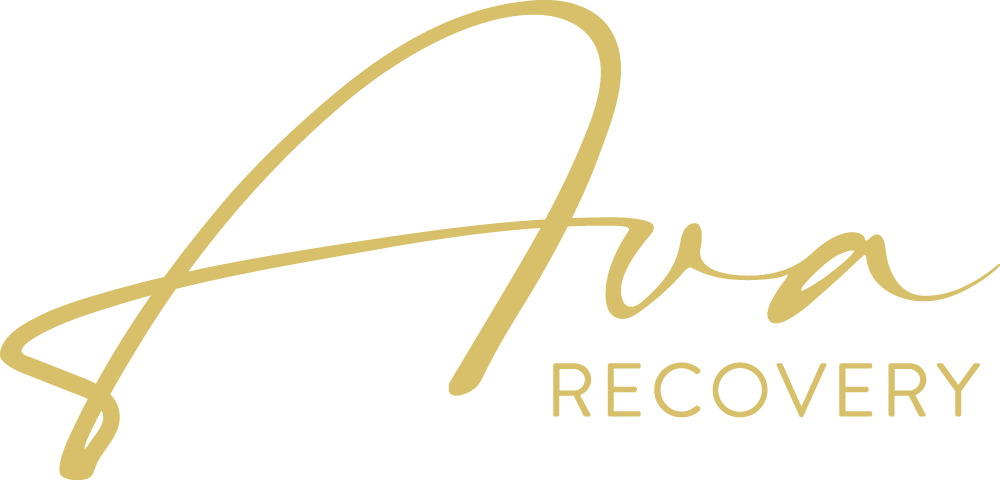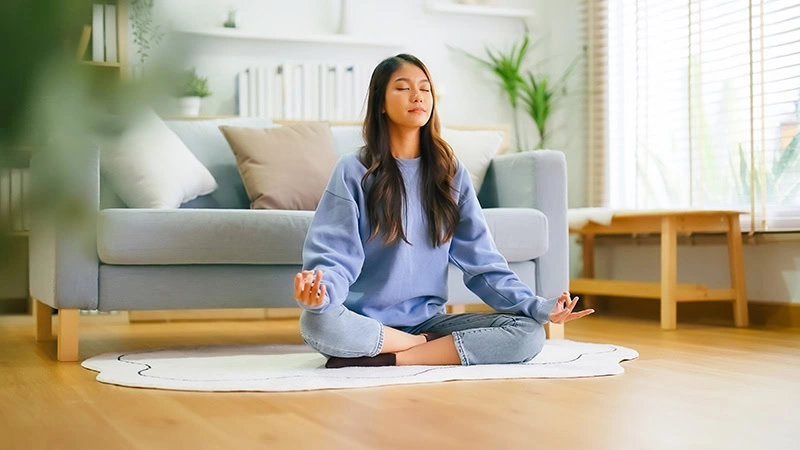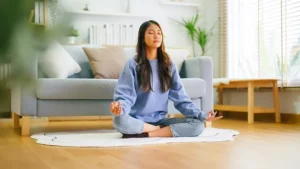Mindfulness is a practice that encourages you to be more, as the name suggests, mindful or aware. In Buddhism, being able to prevent yourself from falling into an evil path requires the safeguards of fear of the consequences of your wrongdoing and shame associated with wrongdoing. This is achieved by regularly self-assessing or reflecting on your actions.
This type of meditation has grown into mindfulness practice where you focus on your actions in relation to things like other people, your needs, or the bigger picture.
But how can you practice mindfulness on a daily basis?
Meditate
The best thing you can do is reflect. Too often, people move through life without thinking of the consequences of their actions, how they feel, or what they need.
When this happens, people are more likely to try and fill their needs or meet their needs in a way that may not be as supportive or healthy as possible, like drugs or alcohol or avoidance techniques.
By making time for mindful meditation on a daily basis in the morning, you can set yourself up for figuring out what it is you might need that day like:
- Releasing anger
- Moving with intention
- Forgiving others or self
- Enhancing focus
- Resting in the breath
- Navigating your day with ease
- Befriending discomfort
- Identifying your needs
- Aligning with self-love
The more often you meditate, in the morning, in the evening, or whenever you need to take a pause, the more you will find it possible to identify your true needs in that moment and meet them where you are.
How can I practice mindfulness in daily life? Use mindful meditation regularly.
Think Before Speaking
More often than not, people will say things that might rub you the wrong way and if you don’t take time to mindfully think before speaking and consider the other person’s intent, you are more likely to overreact or have an emotional outburst in response.
For example:
Caitlin is talking to an old friend, Mary, who made a comment about how the ex-husband Caitlin lost because of addiction, is engaged to a younger woman.
This information might be very hurtful to Caitlin, and if she doesn’t use mindfulness, she is more likely to snap at Mary or let that information impact the rest of her day.
Instead, Caitlin can take a moment to think about Mary’s intent.
- Is the speaker trying to cause us pain?
- Is the speaker simply not being mindful of how their comments could be hurtful?
- Is the speaker dealing with something else in their personal lives and letting it color what they say?
These are all helpful questions to ask as they can help you, like Caitlin, be more aware of someone’s intent and respond accordingly.
How can I practice mindfulness in daily life? Take time to reflect on the speaker’s intent before reacting.
Notice Your Emotions
Deep mindfulness means being able to notice your reactions and your feelings without judgment and letting them pass without deeply impacting your actions and emotions.
Using the example of Caitlin above, before getting help, Caitlin might have immediately tried to hide her emotions in response to the news about her ex, covering them up with drugs or alcohol so that she didn’t have to feel them.
Now, however, Caitlin takes the time to sit and think about how she feels without judgment, and with a few minutes of mindful meditation, she’s able to acknowledge those feelings and let them pass without sincerely disrupting her day or influencing her behavior for the worst.
How can I practice mindfulness in daily life? Acknowledge and notice your emotions instead of trying to control them or hide them.
Focus on Your Breathing
There are many things outside of your control, things that are triggering or stressful. Like Caitlin, you cannot control what other people say or do but you can control your breathing.
When overwhelmed, stressed, or simply trying to fill a few moments of spare time, focus on your breathing. A technique called Square Breathing encourages you to inhale deeply and completely exhale by keeping an even number for your inhale, pause, exhale, and pause.
These four actions represent the four corners of a square, and the goal is to keep that square properly shaped with the same amount of time spent on your inhale, your pause, your exhale, and your pause. Start by trying to keep this at 4 seconds per corner, making your way up to 6 seconds per corner.
This practice will help you remember that when you can control nothing around your life, the things that happen to you, near you, or around you, you can control your breathing and this is something that you always have the power to come back to.
How can I practice mindfulness in daily life? Focus on your breathing when things seem out of your control.
Learning Mindfulness at Ava Recovery
At Ava Recovery, our detox and residential programs focus on treating trauma as the root cause of addiction. To that end, we provide a range of therapies like individualized treatment and mindfulness skills.
We know that when you can improve your connection to yourself through breath control, through a deeper understanding of other people’s intent, and through the impact that things around you might have on your emotions and subsequently on your behaviors, you are able to improve everything.
That is why we focus on meeting you where you are, giving you the skills to meet your personal, mental, physical, and spiritual needs so that you can control reactions, triggers, and emotions without substance abuse.
When you are ready to find ways to incorporate mindfulness into your daily life, call our team at (833) 330-3009.






